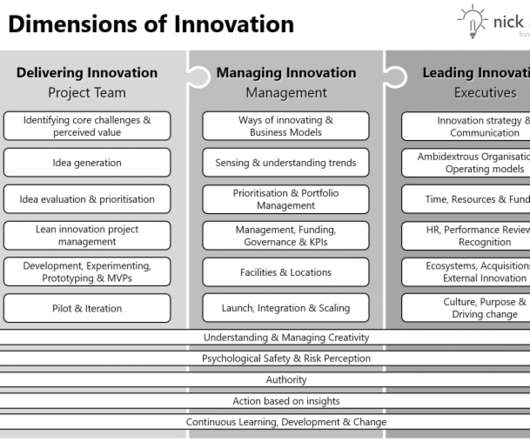Uncertainty is the Innovator’s Friend
The Inovo Group
MARCH 8, 2018
There are four primary dimensions of uncertainty: Organization, Demand, Design and System (ODDS). In 2011, after more than 20 years of research, Harry Klee, a professor in the Horticulture Sciences Department at the University of Florida, developed the “perfect” tomato. Uncertainty makes companies very uncomfortable.
















Let's personalize your content